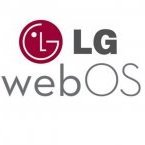-
Similar Topics
-
By David Daul
My magic remote and my Roku remote stopped working for turning off power so I performed a factory reset after troubleshooting to get the remote working. I am now stuck at the 1st screen of the Factory Reset which says "Press the OK Button(wheel) on your remote." Well... this really stinks because the remote doesn't work!!! I have tried a USB mouse, a new magic remote, other LG Remotes with no luck. I have also tried using the button on the bottom of the tv. And, I contacted support which was just an exercise in redoing everything I had already tried... No Luck!!
This is a Nano Cell 55NANO81ANA which is basically just a big brick now since I cannot even use any of the inputs. Does anyone have a trick for getting past this initial screen???
Thanks for the help.
-
By News Reporter
Gone are the days of expensive cable subscriptions and complicated setups, the way content is consumed has evolved. Today, viewers want high-quality entertainment without the hassle of multiple logins, extra payments or additional devices. As demand for convenience, variety and affordability grows, brands are stepping up to offer solutions that redefine home entertainment.
Launched in India in late 2023, “LG Channels” is transforming how audiences watch TV, offering a diverse mix of live TV, on-demand content and genre-specific channels – all for free. Whether you’re in the mood for a nostalgic movie night, the latest news or trending music, everything is just a click away.
With LG Channels rapidly gaining popularity in India, the service continues to expand its regional and local content library, offering channels in Hindi, English, Punjabi, Bhojpuri, Tamil, Telugu, Marathi, Gujarati and Bangla. In a short time, LG has reached a major milestone: 100+ free channels, offering something for everyone – without a price tag.
This achievement marks a significant milestone toward a future where high-quality entertainment is free, accessible and easy to enjoy. LG is committed to continually enhancing its content offerings by adding more channels over time. With a focus on innovation and consumer-friendly solutions, LG is dedicated to providing viewers with an unparalleled entertainment experience.
So, if you own an LG Smart TV, it’s time to sit back, relax and explore the world of LG Channels – where premium entertainment doesn’t require payment, comes with zero hassle and endless possibilities. Because when it comes to great content, Life’s Good when it’s Always ON Always FREE.
Contributed by LG India
# # #
link hidden, please login to view -
By Peter_T
LG Oled42c44LA; cable TV to CI+ module
Program guide works OK until ca. 17.30-18.00 . Then the guide only shows current programs. Inspecting later times is not possible. Only thing that helps is to unplug the TV and plug it in again. But the next day the problem is there again around the same time. Is this a problem of the LG TV? Is there a solution for this?
-
By anna groove
My LG TV is quite an old version, and I don’t even remember when it was purchased. Now I’m looking to replace it with a new one, preferably one that can connect to the internet. It would be even better if it could directly use Spotify. If your TV is the one I seek, please let me know the model. Right now, on my old TV, I can only download Spotify to computer separately and then transfer it to the TV using an MP3.
link hidden, please login to view -
-
By Cody94549
We are able to EDIT some of the functions that are in the initial SETTINGS screen. However other functions that are layers deep into the settings are unable to be dragged/dropped into that EDIT function. Like ASPECT RATIO. To get to that feature requires a long list of clicking things. It is a function that we use a LOT in order to prevent screen burn-in on these OLED screens. (to be able to watch a channel for extended period of time that happens to have that stupid LOGO or "crawl" along the bottom. Like CNN or MSNBC).
-
-
Similar Tagged Content
-
- 0 answers
- 2,253 views
-
- 2 replies
- 3,808 views
-
- 0 answers
- 3,237 views
-
- 0 replies
- 3,297 views
-





Recommended Posts
Join the conversation
You can post now and register later. If you have an account, sign in now to post with your account.
Note: Your post will require moderator approval before it will be visible.